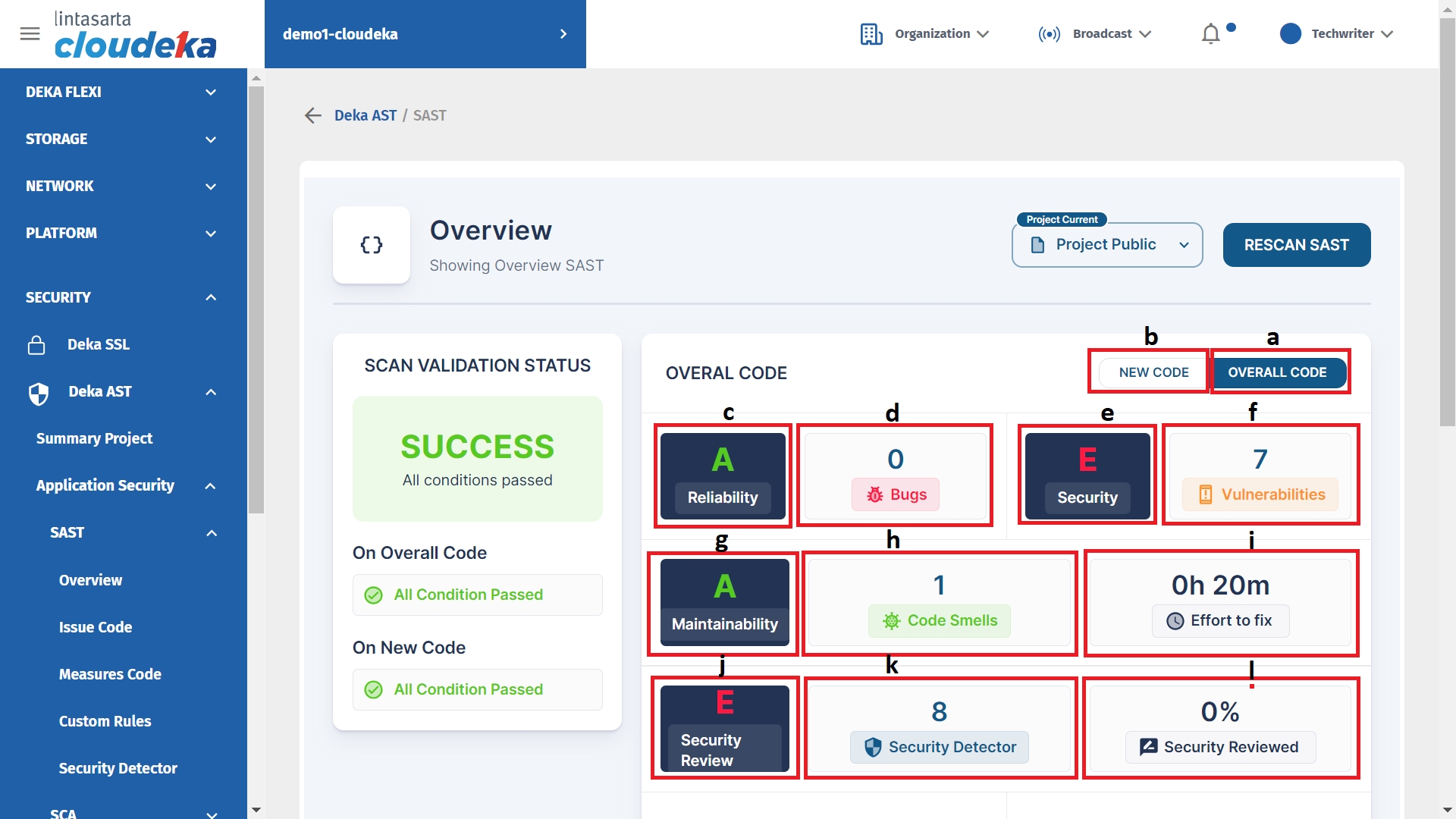SAST
Static Application Security Testing (SAST) is a method for finding security vulnerabilities in application software program code before they are implemented. In SAST, analysis is performed statically on the program code without actively running the application. This method examines the code in depth for flaws and vulnerabilities that could be exploited by unauthorized parties. By using SAST, you can detect security problems as early as possible, fix them, and reduce the risk of attacks on the resulting applications. SAST assists in increasing the reliability and security of application software before deployment to production environments.
To review the results of a scanned project. On the Cloudeka services portal page click the Overview menu. On the Overview page of SAST there is a summary of the information.

(a) Overall Code
Displays the state based on the entire scanned code.
(b) New Code
Displays a brief description based on the newly scanned code.
(c) Reability
Displays a problem if there is a bug in the code that has been implemented.
(d) Bug
Shows the total number of bugs found at the time the code is scanned.
(e) Security
Security on security applications.
(f) Vulnerabilities
Problems related to finding kdependency in applied code.
(g) Maintainability
The ease and effectiveness of maintaining a software application throughout lifecycle.
(h) Code Smells
Displays an indication of a problem that could potentially reduce the quality of code.
(i) Effort to fix
Displays the estimated time it takes to fix all problems.
(j) Security Review
Shows the results of identifying the check process to the checkpointthe right thing to do.
(k) Security Detector
To detect potential vulnerabilities in security.
(l) Security Reviewed
Percentage is associated with the number of corrected problems.
Last updated
